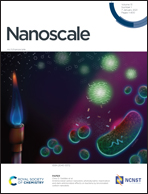Covalent functionalization of carbon materials with redox-active organic molecules for energy storage
Abstract
Carbon-based materials (CBMs) have shown great versatility because they can be chemically combined with other materials for various applications. Chemical modification of CBMs can be achieved via covalent or non-covalent interactions. Non-covalent interactions are weak and fragile, causing structural change and molecule dissociation. Therefore, in this review, we summarize the covalent modification of CBMs via organic chemistry techniques, aiming at forming more robust and stable CBMs. Besides, their application as electrode materials in energy storage systems is also within the scope of this review. Covalent binding of redox-active organic molecules with CBMs improves the transfer rate of electrons and prevents the dissolution of redox-active molecules, resulting in good conductivity and cycle life. Numerous papers on the functionalization of CBMs have been published to date, but some of them lack scientific evidence and are unable to understand from chemistry viewpoint. Reliable articles with adequate evidence are summarized in this review from a synthetic chemistry viewpoint.

- This article is part of the themed collections: Nanoscale and Nanoscale Horizons: Carbon-based nanomaterials, Recent Review Articles and Nanoscale 2021 Emerging Investigators


 Please wait while we load your content...
Please wait while we load your content...
